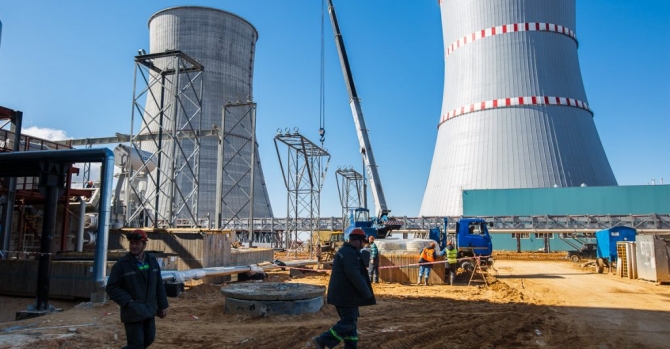Lithuania Accuses Belarus Of Blackmail, Prepares For BelNPP Emergencies
BelarusFeed
22 March 2019, 17:10
 There has been a rise in confrontational rhetoric between Belarus and Lithuania regarding the Belarusian nuclear power plant (BelNPP) under construction.
There has been a rise in confrontational rhetoric between Belarus and Lithuania regarding the Belarusian nuclear power plant (BelNPP) under construction.
On 4 March, the Lithuanian Prime Minister Saulius Skvernelis proposed to convert the nearly-complete nuclear power plant into a gas-fueled station.
The proposal didn’t gain a positive response from the local Ministry of Energy, which explained that the BelNPP is constructed for the country’s energy security and domestic use.
Also, it indicated that about 95% of electricity in Belarus is produced from natural gas, thus, there’s no point in any conversion.
Besides, it stated that the country strives for fuel diversification and developing a reliable source of energy independent of price fluctuations.
Moreover, the launch of a nuclear power plant will reduce greenhouse gas emissions, substitute gas during power generation, and provide new jobs.
Blackmail and safety
The Lithuanian side accused Belarus of using energy as a means of geopolitical blackmail and violating the provisions of the Espoo Convention.
In 2017, Lithuania stated that the NPP poses a threat to Lithuania’s national security, environment and public health. Later the country reported plans to carry out large scale exercises in case of any emergencies at BelNPP.
On 20 March, Speaker of the Lithuanian Seimas Viktoras Pranckietis stated that the country will have neither technical nor political possibilities to buy power from Belarus.
Despite numerous concerns, the BelNPP passed safety tests in compliance with the EU standards and its first power unit is planned to be set into operation at 2019 year-end.
It can withstand earthquakes and floods, heavy winds and torrential rains, squalls, tornados, hail, dust storms, strong blizzards, ice accumulation, fog, droughts, and other weather phenomena.
22 March 2019, 17:10

Photo: TUT.BY
On 4 March, the Lithuanian Prime Minister Saulius Skvernelis proposed to convert the nearly-complete nuclear power plant into a gas-fueled station.
The proposal didn’t gain a positive response from the local Ministry of Energy, which explained that the BelNPP is constructed for the country’s energy security and domestic use.
Also, it indicated that about 95% of electricity in Belarus is produced from natural gas, thus, there’s no point in any conversion.
Besides, it stated that the country strives for fuel diversification and developing a reliable source of energy independent of price fluctuations.
Moreover, the launch of a nuclear power plant will reduce greenhouse gas emissions, substitute gas during power generation, and provide new jobs.
Blackmail and safety
The Lithuanian side accused Belarus of using energy as a means of geopolitical blackmail and violating the provisions of the Espoo Convention.
In 2017, Lithuania stated that the NPP poses a threat to Lithuania’s national security, environment and public health. Later the country reported plans to carry out large scale exercises in case of any emergencies at BelNPP.
On 20 March, Speaker of the Lithuanian Seimas Viktoras Pranckietis stated that the country will have neither technical nor political possibilities to buy power from Belarus.
We are synchronizing with the European continental networks and all lines are in the stage of an imminent shutdown. And our law says that we won’t buy electricity from unsafe nuclear power plants.
Despite numerous concerns, the BelNPP passed safety tests in compliance with the EU standards and its first power unit is planned to be set into operation at 2019 year-end.
It can withstand earthquakes and floods, heavy winds and torrential rains, squalls, tornados, hail, dust storms, strong blizzards, ice accumulation, fog, droughts, and other weather phenomena.

